 If you ever spend a longish stint in
IIMA, some things just get internalized – the mango tree at the base of the
‘Harvard’ Steps; The Stanford Ramp, Dorm names and Dorm life if you were a
student, Louis Kahn Plaza [LKP] and now the underpass and the new campus, not
to mention Rambhai the chaiwalla who has a special window high compound wall symbolizing
‘security’. These are physical structures.
If you ever spend a longish stint in
IIMA, some things just get internalized – the mango tree at the base of the
‘Harvard’ Steps; The Stanford Ramp, Dorm names and Dorm life if you were a
student, Louis Kahn Plaza [LKP] and now the underpass and the new campus, not
to mention Rambhai the chaiwalla who has a special window high compound wall symbolizing
‘security’. These are physical structures.  In addition, you would hear the name
Ravi being mentioned so very often. For Ravi J Matthai, who stepped aside as a
Director way back in 1972, to be remembered so fondly even after 40 years is no
mean feat. It is not that his photographs are pasted all over the campus to
remind him. Yes there are a few, mostly without a mention of his name below,
tucked away in the underpass or in one of the conference rooms to the back of a
seating arrangement. There is an auditorium named after Ravi, popularly [but
incorrectly] referred to RJMCEI auditorium, and a Centre for Educational
Innovation, which is where the RJMCEI comes from. But something about the era
of Ravi constantly strikes you. It is hardly surprising that it inspired Prof.
Ram Mohan [fondly called as TT] to write a book about him. The book is indeed
timely. IIMA is in its 50th year. It is a good time to take stock,
look back and look ahead.
In addition, you would hear the name
Ravi being mentioned so very often. For Ravi J Matthai, who stepped aside as a
Director way back in 1972, to be remembered so fondly even after 40 years is no
mean feat. It is not that his photographs are pasted all over the campus to
remind him. Yes there are a few, mostly without a mention of his name below,
tucked away in the underpass or in one of the conference rooms to the back of a
seating arrangement. There is an auditorium named after Ravi, popularly [but
incorrectly] referred to RJMCEI auditorium, and a Centre for Educational
Innovation, which is where the RJMCEI comes from. But something about the era
of Ravi constantly strikes you. It is hardly surprising that it inspired Prof.
Ram Mohan [fondly called as TT] to write a book about him. The book is indeed
timely. IIMA is in its 50th year. It is a good time to take stock,
look back and look ahead.  The book strikes a nostalgic chord for those who have been associated
with IIMA in some form or the other. However, it also ends up disappointing a
bit, because one always wants to know beyond what is obvious. Biographies are
difficult to write, they need time and patience and run the risk of being
inaccurate. Unlike other research where one is free to draw conclusions based
on data and analysis, biographies are tricky. And when biographies are
intertwined as personal and institutional biographies, it is more likely to be
disastrous unless it is handled very deftly. TT tries to do the balance fairly
well, but not quite. While the intent appears to be a biography of Ravi
Matthai’s professional life, the architecture of the book is that of a
biography of IIMA with Ravi Matthai as an important “brick”. In achieving both,
TT sometimes digresses and falters. While one can quibble about smaller things,
it is important to say that this was a much needed book which helps in
understanding leadership at one end and setting the DNA of an institution
through some hard-coded institutional processes at the other.
The book strikes a nostalgic chord for those who have been associated
with IIMA in some form or the other. However, it also ends up disappointing a
bit, because one always wants to know beyond what is obvious. Biographies are
difficult to write, they need time and patience and run the risk of being
inaccurate. Unlike other research where one is free to draw conclusions based
on data and analysis, biographies are tricky. And when biographies are
intertwined as personal and institutional biographies, it is more likely to be
disastrous unless it is handled very deftly. TT tries to do the balance fairly
well, but not quite. While the intent appears to be a biography of Ravi
Matthai’s professional life, the architecture of the book is that of a
biography of IIMA with Ravi Matthai as an important “brick”. In achieving both,
TT sometimes digresses and falters. While one can quibble about smaller things,
it is important to say that this was a much needed book which helps in
understanding leadership at one end and setting the DNA of an institution
through some hard-coded institutional processes at the other. The first two chapters of the book have nothing to do with Ravi Matthai –
it is more about the preparatory work for setting up IIMA and its early years.
In these chapters TT pans across various activities that happened in the early
stages and the personalities that were involved. While TT makes these chapters
readable by putting some tit-bits and trivia “Soon however, a romantic triangle evolved among [Vikram] Sarabhai,
Mrinalini and [Kamla] Chowdhry”[p.16], or the fact that Jagdish Bhagwati
was offered a position which he declined. These do not add to the grain of the
book. TT also spends a chapter on the early days of Matthai, somewhat
irrelevant to the point of the book.
The first two chapters of the book have nothing to do with Ravi Matthai –
it is more about the preparatory work for setting up IIMA and its early years.
In these chapters TT pans across various activities that happened in the early
stages and the personalities that were involved. While TT makes these chapters
readable by putting some tit-bits and trivia “Soon however, a romantic triangle evolved among [Vikram] Sarabhai,
Mrinalini and [Kamla] Chowdhry”[p.16], or the fact that Jagdish Bhagwati
was offered a position which he declined. These do not add to the grain of the
book. TT also spends a chapter on the early days of Matthai, somewhat
irrelevant to the point of the book.
However, the important point that TT makes in the next few chapters of
the book is something worth reflecting upon. In the Preface TT says “I had often wondered what gave IIMA its
premium rating. The three older IIMs – IIMA, IIMB and IIMC – all have access to
the same pool of faculty and student talent. All have been handsomely supported
by the government. So what is special about IIMA?”[p.XIII]. The answer to
this question appears in the form of what Ravi brought to the table.
 Obviously there are some unique features that Ravi did indeed bring to
the table. This is evidenced by the fact that the systems that exist in IIMA do
not necessarily exist in other institutions where the one of the Founders
Vikram Sarabhai was associated [an illustration is brought out about Physical
Research Laboratory, located across the road from IIMA which has different
systems p.240]. The features that TT identifies are as follows:
Obviously there are some unique features that Ravi did indeed bring to
the table. This is evidenced by the fact that the systems that exist in IIMA do
not necessarily exist in other institutions where the one of the Founders
Vikram Sarabhai was associated [an illustration is brought out about Physical
Research Laboratory, located across the road from IIMA which has different
systems p.240]. The features that TT identifies are as follows:- Recognising the management and leadership style of knowledge based organisations were different and should be extremely flat [p.173]. This is symbolized by not having a separate bungalow for the Director; every faculty member being addressed as a Professor, irrespective of the rank; and ensuring that even when IIMA’s own graduates join in as faculty members, the form of address is necessarily on a first name basis.
- Nurturing and trusting new faculty members, giving time for them to settle down; encouraging the mutual learning process through attending each others’ classes [p.92] and having a transparent feedback system.
- Spotting talent and having a quick turnaround time in offering jobs to faculty members and getting them on board.
- Empowering the faculty, areas, departments to take decisions and tossing conflict issues back to the respective groups for resolution through consensus than adjudicating on issues, but being firm when it was needed.
- Treating each situation on merit of a particular circumstance than the rule book – illustrated by the fact that there are hardly any rules and manuals written, they are all handed down as practice from generation to generation.
- Managing an active dialogue with the state and other stake holders to ensure that the external interface does not create a crisis situation.
- Going beyond traditional businesses to undermanaged sectors – voluntarily – be it agriculture, public systems, healthcare, education.
- Stepping aside after 7 years, thereby laying down a tradition of one term, while honourably continuing as an ordinary faculty member till superannuation.
- Instituting an action research programme called the Jawaja Experiment [Chapter 8] which in turn was an inspiration for a generation of students who chose to work in the social sector.
 In a somewhat celebratory book on Matthai TT spends an entire chapter
[Light and Shadow, Chapter 7] quibbling about how the current administration of
IIMA might be losing the edge and about some of the frustrations. While what he
raises are important and relevant issues in an institution, these inadequacies
have been in the institution for long in various forms. Not all the directors
have stuck to the ‘culture’ of the institution, each one bringing their own
angle of management style. However, the institution has never lost its
resilience and the charm of a great place to be in. During my stay, I did ask
one of faculty members who has spent a lifetime there as to who he would rate
as the best director besides Ravi Matthai, and he was at a loss to name one.
Clearly Ravi towered over the Institute during his time and beyond his time.
In a somewhat celebratory book on Matthai TT spends an entire chapter
[Light and Shadow, Chapter 7] quibbling about how the current administration of
IIMA might be losing the edge and about some of the frustrations. While what he
raises are important and relevant issues in an institution, these inadequacies
have been in the institution for long in various forms. Not all the directors
have stuck to the ‘culture’ of the institution, each one bringing their own
angle of management style. However, the institution has never lost its
resilience and the charm of a great place to be in. During my stay, I did ask
one of faculty members who has spent a lifetime there as to who he would rate
as the best director besides Ravi Matthai, and he was at a loss to name one.
Clearly Ravi towered over the Institute during his time and beyond his time.  TT has a very engaging style of writing, which helps us to race through
the book. The book is peppered with anecdotes and straddles across time. It is
this style that also brings in some unnecessary digressions the diminishes the
significance of the point that TT is trying to make. That point is that Ravi
Matthai brought to the table a unique style of leadership. This style of
leadership was suitable to knowledge institutions which had to be designed as
flat organisations and had to run more on trust and informalities than on
measurability and rules. It takes a bit of effort for the reader to get to this
conclusion.
TT has a very engaging style of writing, which helps us to race through
the book. The book is peppered with anecdotes and straddles across time. It is
this style that also brings in some unnecessary digressions the diminishes the
significance of the point that TT is trying to make. That point is that Ravi
Matthai brought to the table a unique style of leadership. This style of
leadership was suitable to knowledge institutions which had to be designed as
flat organisations and had to run more on trust and informalities than on
measurability and rules. It takes a bit of effort for the reader to get to this
conclusion.
Brick by Red Brick: Ravi Matthai and the Making of
IIM Ahmedabad
Rupa, 2011
TT Ram Mohan
pp.281. Price Rs.495.








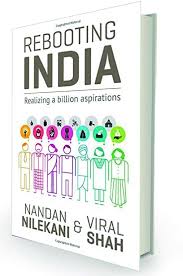








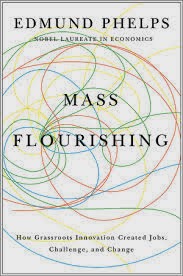









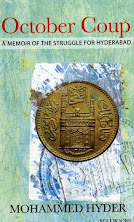

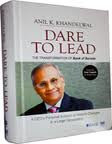












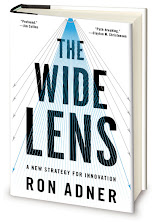

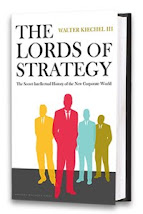











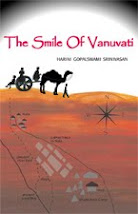


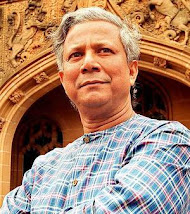
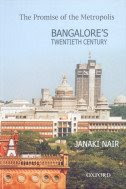




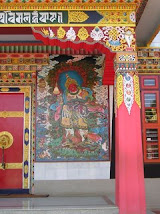


![Hyderabad: A Book [or two] and A Movie](http://3.bp.blogspot.com/_mxWA9ZVkKhQ/S0vnLAO90CI/AAAAAAAABYM/WgbSbAcAaEk/S214/luther1.0.jpg)

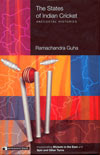





![Two Lives [and this is not about Vikram Seth]](http://1.bp.blogspot.com/_mxWA9ZVkKhQ/S0vjkyDYRvI/AAAAAAAABXM/mJGK-_gZiNg/S214/mansur.jpg)





No comments:
Post a Comment